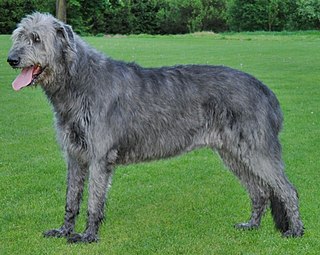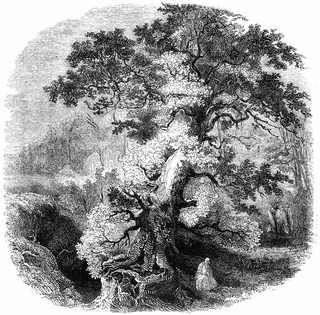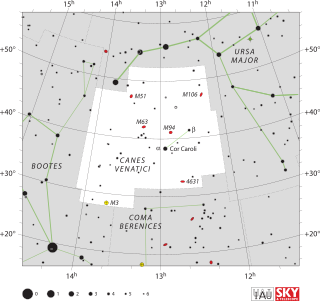In legends
The Irish word cú (pronounced [kuː] ) for "hound" derives from the Primitive Irish cuna, which is from Proto-Celtic *kū ("dog", "wolf"), which in turn derives from Proto-Indo-European *ḱwṓ, "dog."
Many Irish myths and legends include mentions of hounds. One of the most famous involves the Celtic hero Cúchulainn (the Hound of Ulster) or (the Hound of Culann) who killed a blacksmith's Celtic hound in self-defense. When Culann, the blacksmith, asked who would now guard his household, the young Setanta offered to take the dog's place for a year, while training a pup to replace the dead dog. This gained Setanta the nickname of 'the Hound of Culann' or Cú Chulainn. Cuchulainn went on to become one of the greatest warrior legends of that era.
Bran and Sceolan were the most famous dogs of the poet warrior, Fionn mac Cumhaill. The mother of Bran and Sceolan was Tuiren, Fionn Mac Cumhaill's aunt, transformed into a hound by a Sidhe woman Uct Dealbh, irritated by Tuiren's marriage with Uct Dealbh's husband.
In Welsh mythology, Gwyn ap Nudd was the ruler of Annwn (the Underworld) and escorted the souls of the dead there, leading a pack of supernatural hounds, called the Cŵn Annwn (Hounds of Annwn) (see also Wild Hunt). Another well-known Welsh legend is that of Prince Llewellyn 's hound Gelert, who was unjustly slain by his master after being wrongly thought to have killed a child.

Irish mythology is the mythology of the island of Ireland that has been preserved in the oral tradition, and later in the manuscripts of early Celtic Christianity. These tales and themes have continued to be developed over time in the living folklore of the country, but the main themes and characters have remained largely consistent.

The Irish Wolfhound is a historic sighthound dog breed from Ireland that has, by its presence and substantial size, inspired literature, poetry and mythology. Like all sighthounds, it was used to pursue game by speed; it was also famed as a guardian dog, specializing in protection against and for the hunting of wolves. The original dog-type was presumed extinct by most knowledgeable authors but recreated specifically for the canine fancy mainly by Captain George A. Graham in the late 19th century. The modern breed, classified by recent genetic research into the Sighthound United Kingdom Rural Clade, has been used by coursing hunters who have prized it for its ability to dispatch game caught by other, swifter sighthounds.

Fionn mac Cumhaill was a mythical hunter-warrior in Irish mythology, occurring also in the mythologies of Scotland and the Isle of Man. The stories of Fionn and his followers, the Fianna, form the Fenian Cycle, much of it narrated in the voice of Fionn's son, the poet Oisín.
Annwn, Annwfn, or Annwfyn is the Otherworld in Welsh mythology. Ruled by Arawn, it was essentially a world of delights and eternal youth where disease was absent and food was ever-abundant. It became identified with the Christian afterlife in paradise.

Gwyn ap Nudd is a Welsh mythological figure, the king of the Tylwyth Teg or "fair folk" and ruler of the Welsh Otherworld, Annwn, and whose name means “Gwyn, son of Nudd”. Described later on as a great warrior with a "blackened face", Gwyn is intimately associated with the otherworld in medieval Welsh literature, and is associated with the international tradition of the Wild Hunt.

Cú Chulainn, also spelled Cú Chulaind or Cúchulainn and sometimes known in English as Cuhullin, is an Irish mythological demigod who appears in the stories of the Ulster Cycle, as well as in Scottish and Manx mythology. He is believed to be an incarnation of the Irish god Lugh, who is also his father. His mother is the mortal Deichtine, sister of Conchobar mac Nessa.
In Welsh mythology and folklore, Cŵn Annwn were the spectral hounds of Annwn, the otherworld of Welsh myth. They were associated with a form of the Wild Hunt, presided over by either Arawn, king of Annwn in the First Branch of the Mabinogi and alluded to in the Fourth, or by Gwyn ap Nudd as the underworld king and king of the fair(y) folk is named in later medieval lore.
In the Ulster Cycle of Irish mythology, Culann was a smith whose house was protected by a ferocious watchdog. Culann's hound was a pup of Celtchar's hound Dael, and he was found in the skull of Congachnes along with two other pups ; Culann's hound was speckled, while Celtchar and Mac da Tho's hounds were black and grey, respectively.
The Gáe Bulg, meaning "spear of mortal pain/death", "gapped/notched spear", or "belly spear", was the name of the spear of Cúchulainn in the Ulster Cycle of Irish mythology. It was given to him by his martial arts teacher, the warrior woman Scáthach, and its technique was taught only to him.
In Irish mythology, Sadhbh was the mother of Oisín by Fionn mac Cumhail. She is either a daughter of Bodb Derg, king of the Síd of Munster, or may derive in part from Sadb ingen Chuinn, daughter of Conn of the Hundred Battles.
In Celtic mythology, the Otherworld is the realm of the deities and possibly also of the dead. In Gaelic and Brittonic mythology it is usually described as a supernatural realm of everlasting youth, beauty, health, abundance and joy. The Otherworld is similar to the parallel universe, usually elusive, but various mythical heroes visit it either through chance or after being invited by one of its residents. They often reach it by entering ancient burial mounds or caves, or by going under water or across the western sea. Sometimes, the Otherworld is said to exist alongside our own located beyond the edge of the earth and intrudes into our world; signalled by phenomena such as magic mist, sudden changes in the weather, or the appearance of divine beings or unusual animals. An otherworldly woman may invite the hero into the Otherworld by offering an apple or a silver apple branch, or a ball of thread to follow as it unwinds.
The cù-sìth(e), plural coin-shìth(e) is a mythological hound found in the folklore of Scotland. A similar creature exists in Irish folklore, and it also bears some resemblance to the Welsh Cŵn Annwn.

Slieve Gullion is a mountain in the south of County Armagh, Northern Ireland. The mountain is the heart of the Ring of Gullion and is the highest point in the county, with an elevation of 573 metres (1,880 ft). At the summit is a small lake and two ancient burial cairns, one of which is the highest surviving passage grave in Ireland. Slieve Gullion appears in Irish mythology, where it is associated with the Cailleach and the heroes Fionn mac Cumhaill and Cú Chulainn. It dominates the countryside around it, offering views as far away as Antrim, Dublin Bay and Wicklow on a clear day. Slieve Gullion Forest Park is on its eastern slope.

Many types of trees found in the Celtic nations are considered to be sacred, whether as symbols, or due to medicinal properties, or because they are seen as the abode of particular nature spirits. Historically and in folklore, the respect given to trees varies in different parts of the Celtic world. On the Isle of Man, the phrase 'fairy tree' often refers to the elder tree. The medieval Welsh poem Cad Goddeu is believed to contain Celtic tree lore, possibly relating to the crann ogham, the branch of the ogham alphabet where tree names are used as mnemonic devices.
Elements of Irish mythology often appear in popular culture. Sometimes similar themes are utilized in new narratives; other times the only similarity is the use of a name from Irish mythology, applied to a completely different character and story.

Irish Fairy Tales is a retelling of ten Irish folktales by the Irish author James Stephens. The English illustrator Arthur Rackham provided interior artwork, including numerous black and white illustrations and sixteen color plates. The stories are set in a wooded, Medieval Ireland filled with larger-than-life hunters, warriors, kings, and fairies. Many stories concern the Fianna and their captain, Fionn mac Uail, from the Fenian Cycle of Irish mythology.
Adhnúall or Adnual is an Celtic mythological animal, one of the hunting dogs of Fionn mac Cumhaill.

Tuiren, also referred to as HAT-P-36, is a 12th magnitude G-type main-sequence star estimated to be approximately 1,034 light-years away from Earth in the constellation Canes Venatici. Tuiren is too faint to be seen with the naked eye, but it is possible to view it with binoculars or a small telescope. In 2012 a hot Jupiter-type exoplanet was discovered orbiting Tuiren with an orbital period of about 1.3 Earth days. In December 2019, HAT-P-36 was named Tuiren and its planetary companion, HAT-P-36b, was named Bran as a result of Ireland's contribution to the 2019 NameExoWorlds campaign. Bran has a mass approximately 1.8 times that of Jupiter and a radius 1.2 times larger.
Bran and Sceólang are the hounds of Fionn mac Cumhaill in the Fenian Cycle of Irish mythology.











